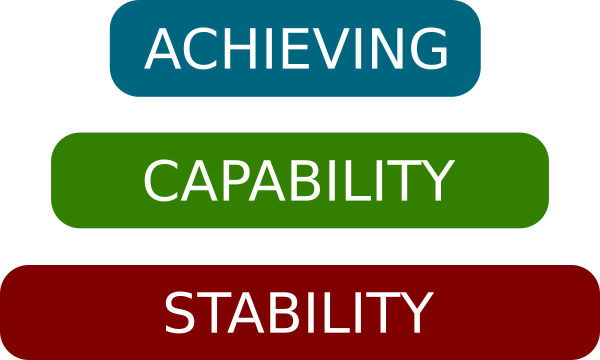Recognising the Problem
- The first step to overcoming any problem is recognising it. When students can identify the cause of their struggles, they’re better equipped to manage them. Self-awareness helps them understand their own reactions, while emotional intelligence enables them to interpret not only their own feelings but also those of others. These skills give them the tools to realise when something is not right.
Navigating your way through a problem
- Having identified a problem, students need tools to address the problem. Being willing to ask for help, being able to solve problems and to see challenges in a different light provides a strong foundation for facing adversity. Making a step-by-step plan helps students to maintain their well-being and gives them a sense of control. While some challenges may be beyond their control, they can always choose how they respond.
“We can’t direct the wind, but we can adjust the sails.”
- Thomas S. Monson
Seeing Beyond the Problem
- Resilience means looking forward with hope and a sense of purpose. By cultivating optimism, students learn to focus on what’s possible rather than what’s difficult. A strong sense of purpose gives them motivation, helping them see challenges as steps along their journey rather than obstacles in their way. Confidence and self-efficacy grow as students believe in their abilities and recognise that they can overcome obstacles. With self belief, they are empowered to persevere and approach the future with clarity and strength.
In Summary: Pathways to Resilience
- Emotional Resilience isn’t built overnight, it’s a journey that begins with a foundation of stability and grows through awareness, proactive effort, and a hopeful outlook. By helping students meet their basic needs and providing an environment of support, we set the stage for resilience. From there, guiding students to recognise their challenges, equipping them with tools to navigate adversity, and encouraging them to see beyond immediate problems creates a pathway to growth.
- Emotional Resilience empowers students to not only face life’s challenges but to emerge from them stronger, more confident, and with a renewed sense of purpose. When students learn to adjust their sails in the face of difficult winds, they’re prepared not just to overcome today’s obstacles but to embrace the future with resilience and optimism.
- Emotional resilience is not an innate skill but one that can be developed through education, support, and resources. Schools already play a vital role in supporting students through their struggles and traumas. However, early prevention offers an even greater benefit: by equipping children with resilience skills before they face adversity, which enables them to cope more effectively, recover quickly, and avoid pitfalls brought about by poor decision-making.
Resources and Tips for Supporting Resilience
- Encourage students to share what’s on their minds, help them come up with solutions, and remind them of their strengths. Simple acts like these can go a long way in building resilience. Emotional resilience is something that can be learned and strengthened over time, for all of us. By recognising where a child may be struggling with resilience, we can better support them to cope, recover, learn, and ultimately thrive.
“No one escapes pain, fear, and suffering. Yet from pain can come wisdom, from fear can come courage, from suffering can come strength – if we have the virtue of resilience.”
― Eric Greitens, Resilience

COMMENTS
Please feel free to comment or feedback on this article.
No comments
comments will not appear straight away
